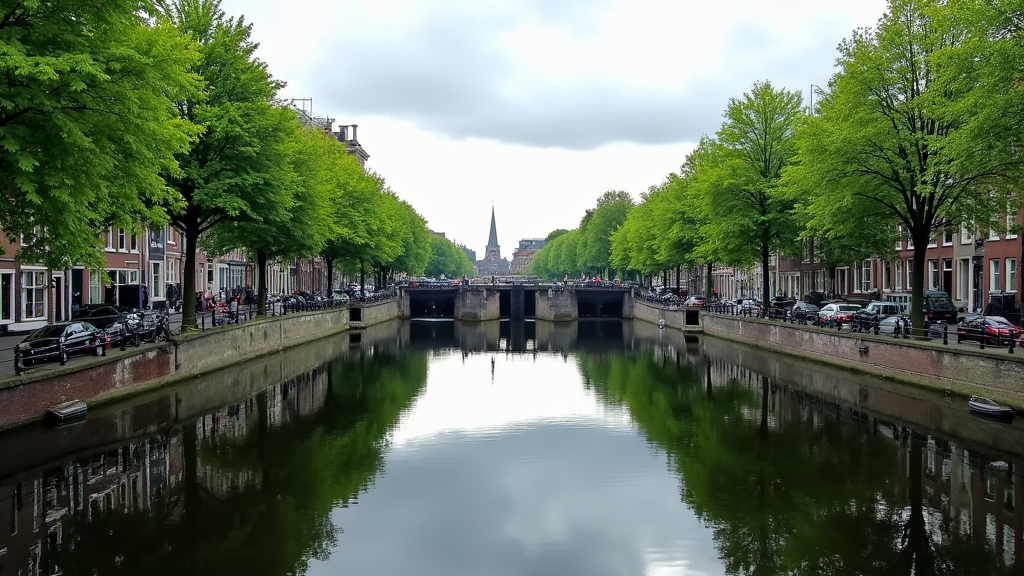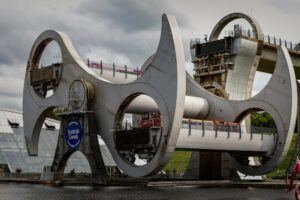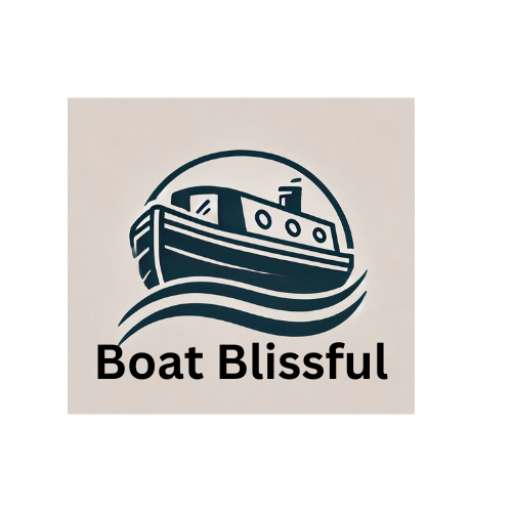Famous Canals That Shaped Narrowboat History
Canals have played a major role in shaping the history of narrowboats and the communities that live along their banks. Over many centuries, these waterways have not only provided transportation routes but also influenced the culture, commerce, and engineering of the regions they serve. This article explores famous canals that shaped narrowboat history, providing an overview of remarkable engineering feats, historical milestones, and practical life on the water.

Historic Canals and Their Impact on Narrowboat Heritage
The beginnings of narrowboat history are closely tied to the early canal systems that were constructed during the Industrial Revolution. These waterways were built to transport goods ranging from raw materials to finished products, transforming the economic landscape of the United Kingdom and Europe. Narrowboats became synonymous with these canals because of their ability to find their way through these confined waterways. Their compact size, distinctive design, and maneuverability made them ideal for carrying cargo and transporting passengers through the expanding network of industrial transport routes.
As industrialization grew, so did the need for efficient transport. Canals were the primary arteries of commerce before the rise of rail and road networks. Many of the canals built in the 18th and 19th centuries still influence modern infrastructure and continue to be a source of nostalgia and pride for enthusiasts. They remind us of a time when engineering ingenuity met the needs of rapid industrial growth, marking a critical period in narrowboat history.
Additional local histories reveal that many communities developed a deep connection with these waterways. Small towns flourished along the banks, with markets and workshops emerging to serve canal travelers. The art, literature, and even regional dialects were influenced by a life spent near water, adding layers to the rich tapestry of canal heritage.
The Oldest Canal in the UK and Its Legacy
One common question that comes up when discussing canal history is: What is the oldest canal in the UK? The answer is the Sankey Canal, which was built in the early 1750s. This historic waterway not only represents the pioneering efforts in canal construction but also set the stage for subsequent developments in canal engineering. The Sankey Canal provided essential routes for moving coal and other goods during a critical period of Britain’s industrial expansion.
This canal sparked further interest in waterway engineering projects throughout the country. Its success inspired many similar projects, leading to the establishment of an all-in-one network of canals. These routes connected major industrial sites and helped foster economic growth, establishing narrowboats as vital tools in the era of industrialization. Today, the Sankey Canal serves as a reminder of the innovative spirit that propelled the United Kingdom into a new age of transport and production.
Iconic Engineering Marvels: The Famous Canal Boat Lift

A standout feature of canal systems that still captures the imagination is the famous canal boat lift. This innovative engineering solution addressed the challenge of dealing with different water levels along a canal route. One such landmark is the Falkirk Wheel in Scotland. The Falkirk Wheel is one of the most impressive feats of modern canal engineering, designed to connect a network of canals at varying altitudes.
The canal boat lift allowed for the efficient transport of narrowboats and cargo between different elevations without the long, winding paths that would otherwise be necessary. It solved a major problem as canals spanned unpredictable terrain, and it remains a popular destination for both engineers and tourists fascinated by its design.
These feats of engineering were groundbreaking at the time of their construction and still inspire modern innovations. The famous canal boat lift represents how practical engineering can step up transportation systems, preserving a living history of waterway transport while drawing attention to next-level cool technical achievements.
Practical Life on a Narrowboat: Financial and Social Considerations
Living on a narrowboat offers a unique lifestyle that comes with its own set of challenges and benefits. One topic that has sparked debate over the years is whether narrowboat residents pay council tax. This is a common query among those considering a mobile lifestyle. In many regions, residents living on a narrowboat may not be subject to council tax in the traditional sense because they are not considered permanent residents of a property; however, there can be other applicable fees or services to consider, depending on local regulations.
The lifestyle is both charming and practical for those who appreciate the freedom to live on the water. Narrowboats are not only used for transport but also serve as floating homes, offering a form of affordable housing for some. Yet, living on a narrowboat means adapting to life with limited space, maintaining the vessel, and sometimes dealing with complex legal and administrative issues associated with non-traditional housing.
Beyond practical matters, life on a narrowboat is imbued with a social charm. Residents often share tips on maintenance, trade experiences about weather challenges, and even team up on canal restoration projects. These communal interactions foster a sense of belonging and ensure that both old traditions and new innovations are interwoven in daily life. This blend of practicality and community spirit makes narrowboat living very important for those looking to embrace alternative lifestyles.
To add even more depth to the experience, many narrowboat dwellers participate in local festivals, art exhibitions, and music gatherings organized on the canals. These events bring together newcomers and veteran residents alike, creating opportunities to learn from one another and strengthening the bonds that keep these waterborne communities thriving.
Remarkable Canal Journeys: Narrowboats Crossing New Boundaries
Another fascinating aspect of narrowboat history is the adventurous spirit displayed by those who explore beyond traditional canal routes. A frequently asked question is: Has a canal boat ever crossed the Channel? While the typical operation of narrowboats is within the canal networks, there have been notable exceptions where narrowboats have ventured across the Channel, shedding light on their versatility and the ambition of their owners.
Some daring individuals have piloted their narrowboats from canal networks into open waters, connecting the inland waterways with the coastal routes. These journeys demonstrate the adaptability of narrowboats and the enduring appeal of canal travel. They are not just about the mechanical function—they are about the thrill of adventure and self-reliance that captivates supporters of this lifestyle. Such exploits also highlight the ingenious modifications sometimes necessary for narrowboats to handle different water conditions, showcasing the rich tapestry of stories that have become part of narrowboat lore.
Though these Channel crossings are exceptional and not common practice, they symbolize the adventurous spirit that has kept the culture of narrowboats vibrant and evolving. They inspire new generations of enthusiasts who continue to push boundaries while cherishing the history and heritage of canal travel.
Daily Life on the Canals: Community and Culture
The canals are more than just transportation routes; they are also the backdrop to vibrant communities. Along the numerous canals, narrowboat residents have built small communities that emphasize cooperation, shared interests, and a love for water life. These communities celebrate their collective heritage through festivals, canal-side gatherings, and local traditions that have persisted through decades of change.
The social aspect of canal life is woven deeply into the fabric of narrowboat culture. People often form close bonds with neighbors whose homes are nestled along the banks of these historic waterways. The sense of community is further strengthened by shared challenges and experiences, such as maintaining the boat, organizing local events, and even teaming up on canal restoration projects. The lifestyle is distinctive, blending the old with the new in ways that continue to fascinate both residents and visitors alike.
Frequently Asked Questions
The historical overview and community insights often raise some common questions for those curious about narrowboat living and canal history. Here are some of the most frequently asked questions:
Question: What is the oldest canal in the UK?
Answer: The Sankey Canal, built in the early 1750s, is recognized as the oldest canal in the United Kingdom. This canal paved the way for further development in waterway infrastructure during the Industrial Revolution, contributing significantly to the next stage of narrowboat history.
Question: What is the famous canal boat lift?
Answer: The Falkirk Wheel in Scotland is one of the best-known canal boat lifts. This engineering marvel bridges different water levels along a canal route, making it easier for narrowboats to manage steep gradients. It stands as a testament to innovative engineering and continues to attract visitors and engineering enthusiasts alike.
Question: Do you pay council tax if you live on a narrowboat?
Answer: In many cases, living on a narrowboat exempts residents from paying council tax, since the boat is mobile and not considered permanent property. However, this can vary by location and local regulations, so it is advisable for narrowboat dwellers to check with their local council for accurate information on any fees or charges that may apply.
Question: Has a canal boat ever crossed the Channel?
Answer: While narrowboats are primarily designed for internal waterways, there have been remarkable instances where canal boats have crossed the Channel. These journeys are rare and often involve significant modifications to cope with open water conditions. The adventures of these narrowboats highlight an innovative spirit and a willingness to explore beyond traditional canal routes.
Modern Preservation and Future of Canal Culture
Today, the legacy of canals and narrowboats is celebrated not just by historians but also by enthusiasts who strive to keep this vibrant culture alive. The preservation of historic canals is supported by volunteer groups and organizations that organize canal clean-ups, restoration projects, and cultural events. The modern narrowboat movement is focused on a blend of historical preservation and modern living, updating narrowboats with contemporary conveniences while retaining their traditional charm.
Local governments and community groups continue to work together to ensure that these waterways remain functional and accessible. The next stage of canal culture is an ongoing process, and each restoration project and community initiative plays a role in preserving the legacy for future generations. New technologies and environmental awareness are being incorporated into restoration efforts, making it easier to maintain these historic routes while adapting to modern needs.
In addition, numerous educational programs and guided tours are helping to spread the word about canal history. These initiatives not only draw in tourists but also engage local youth, ensuring that the stories and skills related to canal maintenance and narrowboat operation are passed on. This blend of community effort and technological update ensures that the charm of the waterways is preserved while also moving into the next stage.
Embracing a Unique Way of Life
Narrowboat living is far more than a practical means of transport or a relic of the Industrial Revolution. It is a lifestyle that has influenced art, literature, and popular culture across the United Kingdom and beyond. The canals have witnessed stories of human endeavor, artistic expression, and remarkable engineering feats.
For many, living on a narrowboat offers the opportunity to embrace a slower, more connected way of life. It allows residents to appreciate the beauty of a waterborne community, where daily routines are intertwined with the natural rhythms of canal life. Alongside practical challenges, the lifestyle offers a strong sense of freedom and proximity to nature rarely found in conventional living settings.
This enduring lifestyle continues to attract new generations who are looking for alternatives to traditional housing. With the incorporation of modern technology and a renewed interest in sustainable living, narrowboat communities are evolving while still holding on to their cherished traditions. Canal festivals, boat rallies, and restoration workshops all contribute to a vibrant community spirit that is as refreshing as it is rooted in history.
Exploring the Rich Tapestry of Canal History
In exploring famous canals that shaped narrowboat history, it becomes clear how these waterways have influenced both technological progress and community life over the centuries. From the earliest constructions such as the Sankey Canal to modern marvels like the Falkirk Wheel, these waterways have continuously adapted to meet new challenges. Each canal has its own story, etched into the banks and reflected in the lives of those who live on and travel along them.
History, engineering, and the human spirit converge in canal culture. Whether you are a history buff, an engineering enthusiast, or simply someone who appreciates scenic views and a slower pace of life, the canals offer a wealth of experiences and insights. The narrowboat culture is a living reminder of past achievements and a testament to a unique lifestyle that has survived and evolved over the centuries.
Looking Ahead: The Future of Narrowboat and Canal Culture
The history of narrowboats intertwined with canals is far from static. As new generations continue to explore and revitalize these waterways, the future promises both innovation and preservation. Modern narrowboat enthusiasts are blending the past and present, upgrading their boats with contemporary technologies while still paying homage to traditional designs and practices.
Through community events, restoration projects, and an increasing interest in sustainable living, the future of canal culture looks robust. Digital platforms now connect enthusiasts around the globe, while local initiatives continue to nurture a sense of community along the banks. This dynamic way of life carries forward a legacy that is both nostalgic and progressive.
To further illustrate the vibrant future ahead, many communities are drafting plans for eco-friendly modifications and educational outreach programs. These projects not only aim to preserve the historical significance of canals but also ensure that this unique heritage adapts to meet contemporary challenges and environmental standards.
Final Thoughts
The journey through canal history reveals an intricate tapestry of innovation, community, and adventure. From the ancient Sankey Canal to the engineering marvel of the Falkirk Wheel, these waterways have had a lasting impact on narrowboat culture. The unique lifestyle associated with narrowboats, complete with vibrant community ties and occasional daring adventures like Channel crossings, showcases the enduring appeal of life on the water.
For anyone intrigued by the blend of historical significance and modern living, the canals offer a rich and engaging narrative. Restoration projects continue, and as new enthusiasts let it rip into their explorations, narrowboat history remains an inspiring example of ingenuity and a living tradition cherished by many. Every preserved lock, every maintained canal bank, and every innovative engineering project is a part of that continuing story.
The canals are not just lengthy passages for boats. They are the veins of a living history that draws communities together, inspires innovation, and offers a peaceful retreat from modern chaos. Experience a canal near you, enjoy the charm of narrowboat living, and appreciate the incredible history that flows along these timeless waterways.

This was such a beautifully detailed journey through narrowboat history and culture! I had no idea how much canals shaped local communities and even influenced dialects and art. The part about adventurous crossings like the Channel really surprised me. It shows how adaptable narrowboats can be. I’m curious, though—how do modern narrowboat owners balance preserving tradition with adopting tech like solar panels or smart navigation?
Thank you so much! I’m really glad you enjoyed the journey through narrowboat history and its cultural ripples. It’s true—those canals are far more than waterways; they’re threads that stitched together industry, community, and even creative expression.
As for your great question: modern narrowboat owners often walk a thoughtful line between heritage and innovation. Many strive to preserve the traditional aesthetics—things like classic paintwork, signage, and even ropework—while discreetly integrating modern tech. For example, solar panels are a popular eco-friendly addition, often mounted in ways that don’t disrupt the boat’s vintage profile. Smart navigation tools, battery monitors, and efficient heating systems are also becoming more common, helping boaters live more sustainably and comfortably without losing that timeless charm.
It’s all about honoring the past while making sure the lifestyle fits today’s needs—something the narrowboat community tends to do with a lot of pride and creativity.